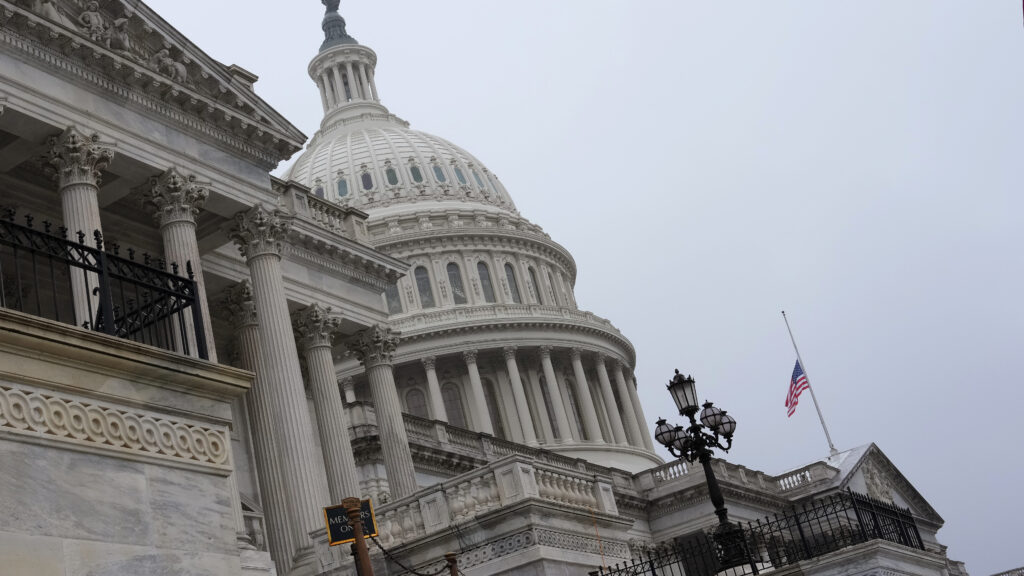
10.9 million people would lose health insurance under Trump’s tax cut bill, CBO projects
How did your country report this? Share your view in the comments.
Diverging Reports Breakdown
10.9 million people would lose health insurance under Trump’s tax cut bill, CBO projects
The Congressional Budget Office releases its score of the House Republicans’ tax bill. The bill would lead to nearly 11 million people losing health insurance, the CBO says. The loss of health insurance is a key source of savings to help finance President Trump’s tax cuts. Overall, the bill increases the federal deficit by $2.4 trillion over a decade, the report says.. The CBO report doesn’t account for another looming change to health care: enhanced premium tax credits that help people buy ACA coverage are set to expire at the end of the year. Republicans aim to pass the bill before July 4, but the real deadline might be when the government reaches its borrowing limit, expected sometime around August. The House bill would require people up to age 64 who are without dependents or disabilities to work at least 80 hours a month in order to keep coverage. They would need to document twice a year that they’re working. They could also maintain coverage if they perform community service or are enrolled in educational programs.
WASHINGTON — House Republicans’ tax bill would lead to nearly 11 million people losing health insurance, providing a key source of savings to help finance President Trump’s tax cuts, according to projections that nonpartisan congressional scorekeepers published Wednesday.
The official projections from the Congressional Budget Office give Democrats ammunition to attack Republicans for taking insurance from low-income voters to pay for tax cuts that disproportionately benefit the rich. Most Republicans say the bill only takes insurance from those without jobs who are able to work and that pregnant women, children, people with disabilities, and frail older adults will not be affected.
advertisement
House Energy and Commerce Committee Ranking Member Frank Pallone (D-N.J.), for example, said the CBO score shows the “catastrophic consequences” of the bill.
Overall, the bill increases the federal deficit by $2.4 trillion over a decade, thanks to its extension of Trump’s tax cuts and the enactment of new ones. Extending lower tax rates alone costs $2.2 trillion over a decade, for example.
About 7.8 million people would lose Medicaid coverage, while much of the rest of the losses would stem from the Affordable Care Act’s exchanges. Among those losing coverage would be 1.4 million immigrants and others who don’t have, or can’t prove, a legal status that would give them access to insurance. The bill imposes new restrictions on health insurance targeted at states that use their own funds to cover undocumented immigrants.
advertisement
Hospitals, which are in an especially vulnerable position, will use the CBO projections to fight for changes in the Senate that curb enrollment losses.
Taken together, the estimates show that the bill could represent the largest cuts to federal health care programs in history. The CBO report doesn’t account for another looming change to health care: enhanced premium tax credits that help people buy ACA coverage are set to expire at the end of the year. The bill does not renew them. The Trump administration has separately estimated that 4.4 million would lose coverage without the tax credits.
Senators will no doubt make changes to the House bill, and some are worried about Medicaid cuts, though the bill’s imposition of work requirements remains popular even among those with concerns. They are not expected to write a new bill from scratch, due to time constraints. Republicans aim to pass the bill before July 4, but the real deadline might be when the government reaches its borrowing limit, expected sometime around August.
The health care portions of the bill can be placed in two big buckets: Medicaid cuts and reforms to the Affordable Care Act marketplaces.
The addition of work requirements to the Medicaid program is responsible for about $344 billion of the savings in the bill, the most of any health care provision. The bill would require people up to age 64 who are without dependents or disabilities to work at least 80 hours a month in order to keep coverage. They would need to document twice a year that they’re working. They could also maintain coverage if they perform community service or are enrolled in educational programs.
Related Story How Trump’s tax cut bill would reshape health care
That savings figure is up from earlier estimates because Republicans decided to start the work requirements earlier, by Dec. 31, 2026. When the CBO had last scored that provision, the measure took effect in 2029, after the next presidential election. Even still, Medicaid enrollees probably would not have to deal with work requirements until after the midterms.
advertisement
The CBO had done preliminary “scores” of the bill, which projected the budget impact of measures and their effect on enrollment. But the CBO didn’t have time to analyze measures that were added last minute, and they hadn’t yet accounted for how pieces of the bill interact.
Two measures aimed at curbing states’ ability to increase federal funding of their Medicaid programs would together save $162 billion. The measures include new limits on states’ provider taxes and on state-directed payment programs.
In a smaller bucket, the bill includes reforms to drug middlemen, which amount to $664 million in government savings. It would limit how pharmacy benefit managers can receive money from drugmakers, impose transparency requirements, and prevent spread pricing in Medicaid.
The bill also would boost payments to doctors by $8.9 billion over a decade by partially basing their Medicare payment rates on medical inflation.
